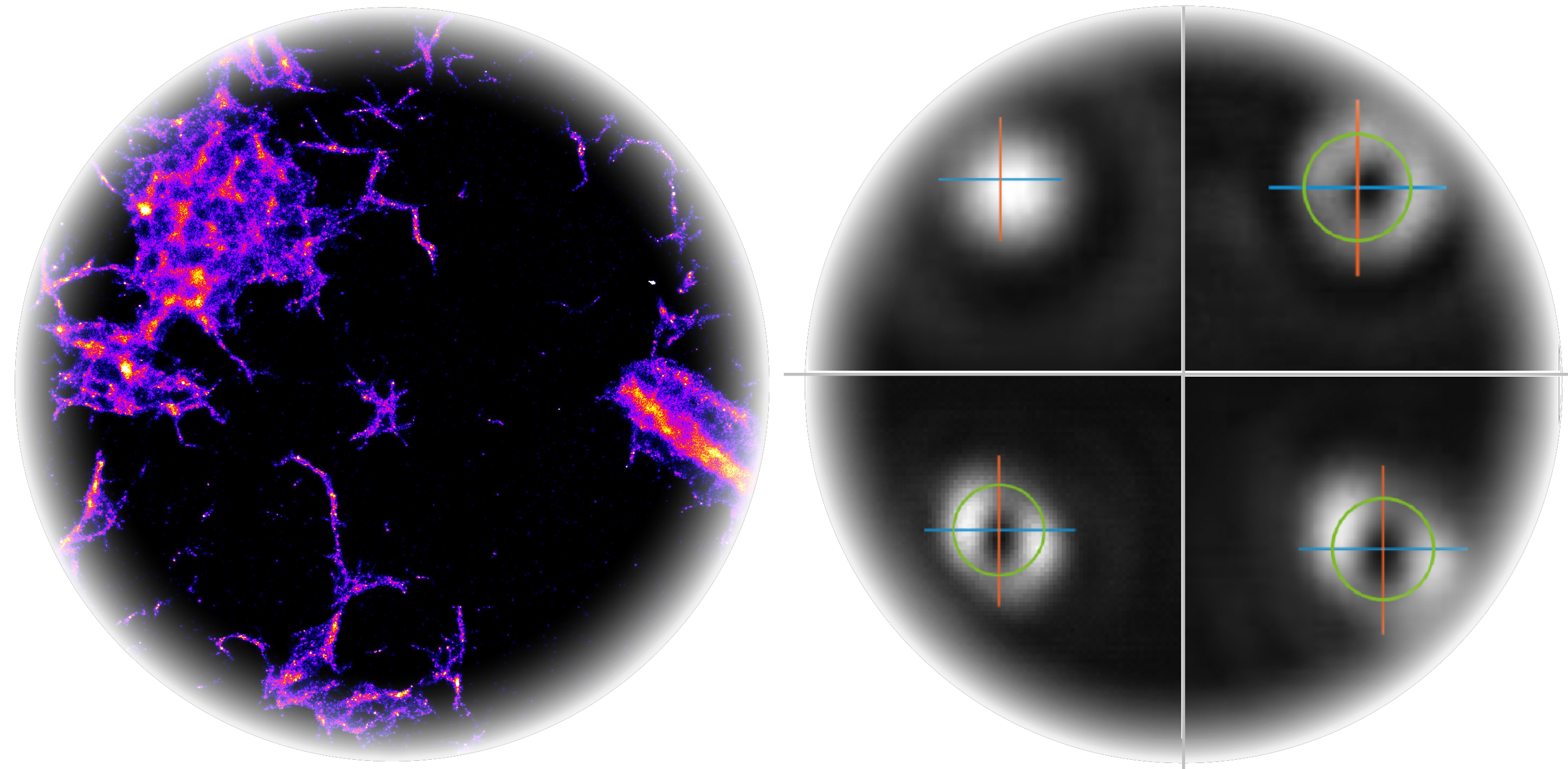Super-Resolution Imaging
Super-resolution imaging techniques push the boundaries of optical microscopy, allowing researchers to observe structures and dynamic processes at resolutions far beyond the diffraction limit. Our advanced setups, including Orbital Tracking Microscopy, STORM, and STED, enable precise visualization and study of molecular and cellular interactions in unparalleled detail.
STORM imaging
We perform Stochastic Optical Reconstruction Microscopy (STORM) on a dual-color, high-precision microscope built on an inverted Total Internal Reflection Fluorescence (TIRF) platform. It integrates high-power continuous wave (CW) lasers for excitation (445 nm, 488 nm, 514 nm, 561 nm, and 594 nm) and a Perfect Focus unit for stability. The system supports single-molecule localization with TIRF and widefield illumination, enabling both single-color and multi-color STORM imaging. Drift correction and advanced localization algorithms provide resolution below 10 nm for precise molecular mapping.

STED imaging
Stimulated Emission Depletion (STED) microscopy achieves super-resolution by depleting fluorescence at the periphery of the excitation spot, effectively shrinking the point spread function. Our STED setup offers unparalleled spatial resolution for nanoscale imaging. Key features are:
- Sub-diffraction resolution: ~20 nm resolution in the lateral plane.
- Depletion beam: we use a donut-shaped PSF at 736 nm or 766 nm for precise control of fluorescence quenching.
- Multi-color imaging: at 568 and 635 nm.

Applications of Super-Resolution Imaging
These advanced microscopy setups serve for exploring the intricate interactions at the nanoscale across diverse applications:
- Imaging molecular interactions: Elucidating protein assemblies and signaling pathways.
- Structural biology: Visualizing subcellular architecture with nanometer precision.
- Dynamic studies: Tracking live-cell processes and intracellular transport mechanisms.
- Material mapping: Structural investigations of nanoparticles and substructures in materials at the nm scale.
